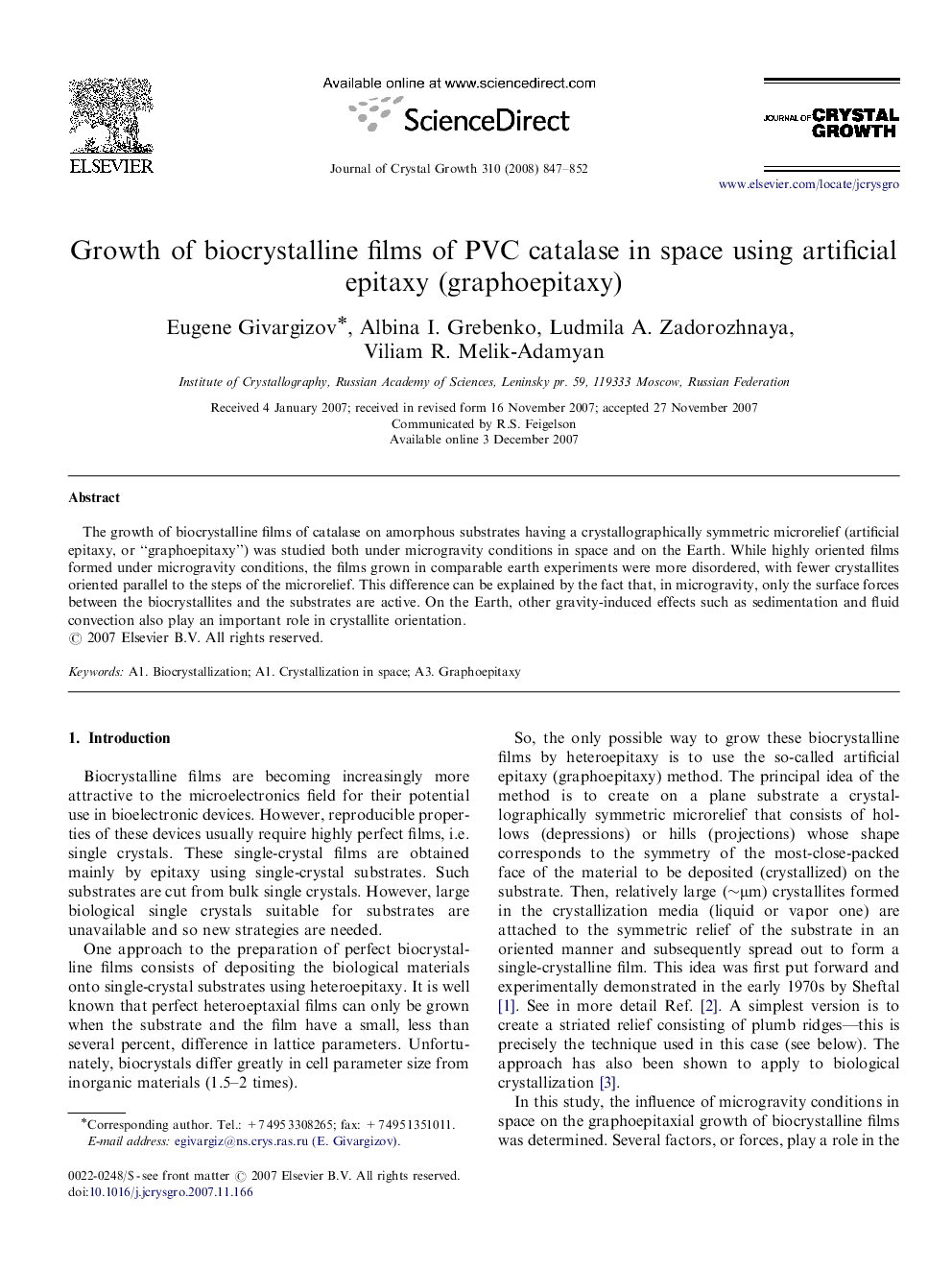| Article ID | Journal | Published Year | Pages | File Type |
|---|---|---|---|---|
| 1795852 | Journal of Crystal Growth | 2008 | 6 Pages |
Abstract
The growth of biocrystalline films of catalase on amorphous substrates having a crystallographically symmetric microrelief (artificial epitaxy, or “graphoepitaxy”) was studied both under microgravity conditions in space and on the Earth. While highly oriented films formed under microgravity conditions, the films grown in comparable earth experiments were more disordered, with fewer crystallites oriented parallel to the steps of the microrelief. This difference can be explained by the fact that, in microgravity, only the surface forces between the biocrystallites and the substrates are active. On the Earth, other gravity-induced effects such as sedimentation and fluid convection also play an important role in crystallite orientation.
Keywords
Related Topics
Physical Sciences and Engineering
Physics and Astronomy
Condensed Matter Physics
Authors
Eugene Givargizov, Albina I. Grebenko, Ludmila A. Zadorozhnaya, Viliam R. Melik-Adamyan,
